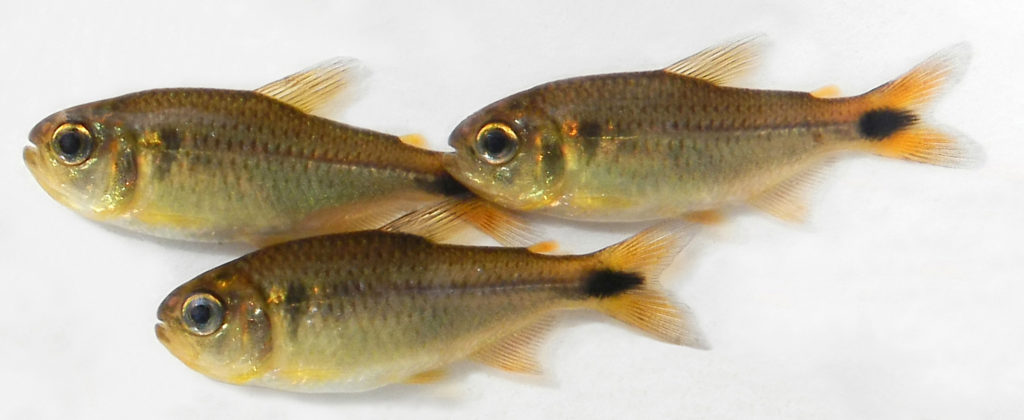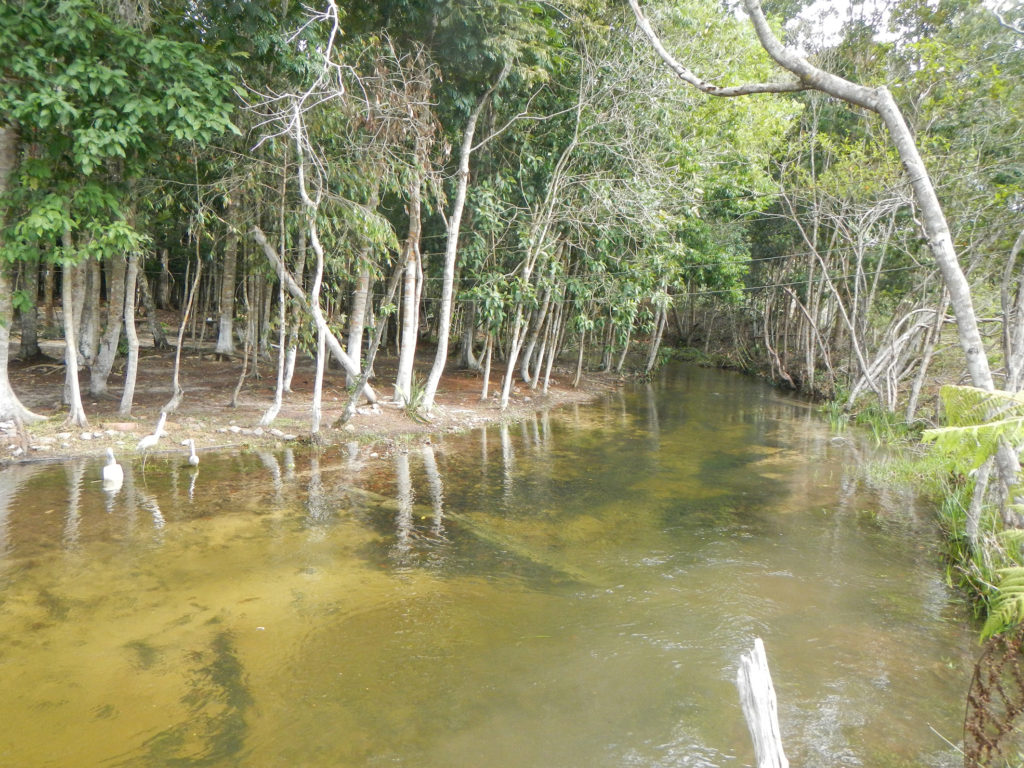
Scientists have discovered and described an attractive new yellow tetra originating from the upper Rio Machado, located within the drainage of the Rio Madiera basin in Brazil. However, with a highly restricted range, this might be a species that aquarists ought best enjoy in pictures unless state-sanctioned aquaculture programs could be enacted to bring the new species into the aquarium trade.
Authors Manoela Maria Ferreira Marinho, Willian Massaharu Ohara and Fernando Cesar Paiva Dagosta describe the new tetra species Moenkhausia cambacica in the open-access paper A new species of Moenkhausia (Characiformes: Characidae) from the rio Madeira basin, Brazil, with comments on the evolution and development of the trunk lateral line system in characids, published in the journal Neotropical Ichthyology.
A New Species of Concern
The type location is located upstream from the Cachoeira Small Hydroeletric Dam on the Rio Machado. Waters there were described as “small, 2–4 m wide and 0.5–2 m deep, with clear waters with swift current, and bottom composed of sand and dead leaves.” This new species comes with a level of conservation anxiety given a highly limited range and encroaching deforestation in the region.

Researchers expressed their concern for this species, noting that “Moenkhausia cambacica is endemic to Brazil, known by only two localities. One site is a tourist bathing resort and the other is entirely surrounded by monoculture plantation. Its area of occupancy (AOO) (B2) 8 km2 is based on these two known records.”
They also note that this new species is “another endemic species from the ‘Chapada dos Parecis’ biogeographic region, characterized by high levels of endemicity and a large number of restricted-range species. This biogeographic region was considered by latter authors as one of the Endemic Amazonian Fish Areas (EAFAs), i.e., regions that should be considered as conservation priorities in the basin by presenting imminent threats and low cover of protected areas.”
These findings cause the authors to suggest an IUCN Red List assessment of “Near Threatened” while also noting that the species comes close to meeting the threshold for a listing of being “Critically Endangered”.
Read More
The full species description, additional images, and an interesting morphological discussion can all be found at https://www.scielo.br/j/ni/a/jH5xWXtJdWQC7JvthgQGrRn/?lang=en





